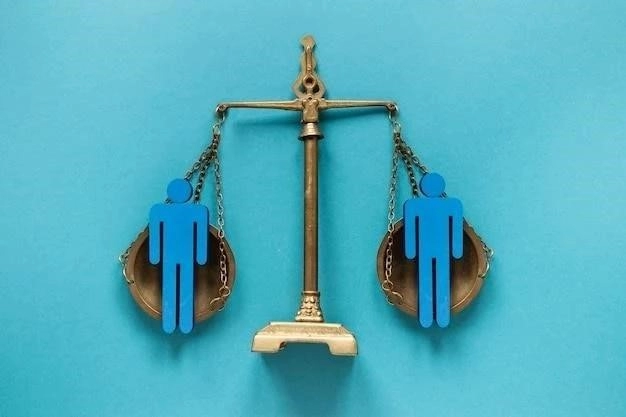The American Justice System: Seeking Fairness and Equality
The American justice system, a complex tapestry woven from law, precedent, and societal values, strives to uphold fairness and equality for all. Rooted in the principles of due process and equal protection, the system faces ongoing challenges in its pursuit of these ideals.
The Structure of the American Justice System
The American justice system, a vast and intricate network, is structured around a framework of federalism, dividing powers between the federal government and individual states. This division creates a dual system with both federal and state courts, each possessing their own specific jurisdictions. At the apex of the federal system stands the Supreme Court, the highest court in the land, responsible for interpreting the Constitution and shaping legal precedent. Below the Supreme Court are thirteen appellate courts, known as Circuit Courts of Appeal, which review cases from lower district courts.

Within each state, a similar hierarchical structure exists, typically consisting of trial courts, appellate courts, and a state supreme court. The specific organization and names of these courts can vary by state, reflecting the unique legal traditions and legislative choices of each jurisdiction. This complex interplay of federal and state courts, while intended to provide checks and balances, can sometimes lead to jurisdictional disputes and inconsistencies in the application of law. Furthermore, the intricate structure necessitates a nuanced understanding of legal procedures, potentially posing challenges for individuals navigating the system without legal representation.
Racial Disparities and the Pursuit of Justice
Despite its aspirations towards equality, the American justice system continues to grapple with deeply ingrained racial disparities, a stark reflection of the nation’s complex historical legacy. Statistical evidence reveals persistent imbalances across various stages of the criminal justice process, from arrest and sentencing to incarceration rates. These disparities, while multifaceted in their origins, underscore systemic biases that undermine the principle of equal justice under the law.
Concerns regarding racial profiling, a practice where individuals are targeted based on race or ethnicity rather than individualized suspicion, persist, eroding trust in law enforcement within marginalized communities. Moreover, implicit biases, unconscious prejudices that can influence decision-making, may contribute to disparate outcomes, even among those with the best intentions. Addressing these entrenched disparities necessitates a multifaceted approach, encompassing criminal justice reforms, implicit bias training, and a critical examination of socioeconomic factors that disproportionately impact minority communities. Achieving a truly just and equitable system demands an unwavering commitment to identifying and dismantling the systemic barriers that perpetuate racial disparities within the pursuit of justice.

The Role of Public Perception and Accountability
The American justice system, as a cornerstone of a democratic society, relies heavily on public perception and accountability to maintain its legitimacy and effectiveness. Public trust in the fairness and impartiality of the judicial process is paramount for ensuring compliance with the law and fostering a sense of shared responsibility for upholding justice. When public perception of the justice system is strained by high-profile cases of misconduct, systemic bias, or perceived inequality, it erodes confidence in the rule of law and can lead to social unrest.
Transparency, accountability, and public engagement are crucial for bolstering public trust and ensuring that the justice system serves the needs of the community it represents. Mechanisms for addressing grievances, such as independent oversight boards and accessible channels for reporting misconduct, are essential for fostering transparency and holding those in positions of power accountable. Moreover, promoting public understanding of legal processes and fostering dialogue between law enforcement, the judiciary, and the communities they serve can contribute to a more informed and engaged citizenry, capable of holding the justice system accountable for upholding its fundamental principles.

Challenges to the Administration of Justice
The American justice system, while founded on noble ideals, faces a myriad of challenges that impede the effective and equitable administration of justice. Resource constraints, including budgetary limitations and staffing shortages, can strain the system’s capacity to handle caseloads effectively, potentially leading to delays, inadequate legal representation, and compromised outcomes. The increasing complexity of legal issues, coupled with a rapidly evolving technological landscape, further complicates the pursuit of justice, requiring ongoing adaptation and specialized expertise within the legal profession.
Moreover, implicit biases, both conscious and unconscious, can permeate decision-making processes at various levels, potentially contributing to disparate treatment and undermining the ideal of blind justice. Addressing these challenges necessitates a multifaceted approach, encompassing not only increased funding and resources but also a commitment to ongoing professional development, technological advancements that enhance efficiency and transparency, and systemic reforms aimed at mitigating the impact of implicit bias. Only through sustained effort and a commitment to continuous improvement can the American justice system effectively navigate these challenges and uphold its fundamental promise of equal justice for all.

Criminal Justice Reform: Addressing Systemic Issues
The American criminal justice system, while designed to uphold justice, has faced increasing scrutiny for systemic issues that undermine its fairness and effectiveness. Calls for reform have echoed across the nation, advocating for a paradigm shift that prioritizes rehabilitation, reduces mass incarceration, and addresses racial disparities. Sentencing reform stands as a prominent focus, with advocates pushing for alternatives to incarceration, such as restorative justice programs and community-based sentencing options, particularly for non-violent offenses.

Addressing racial bias within the criminal justice system remains paramount, requiring a multi-pronged approach that includes implicit bias training for law enforcement, promoting diversity within police forces and judicial bodies, and enacting legislation that mitigates the disproportionate impact of certain laws on minority communities. Furthermore, ensuring access to adequate legal representation for all defendants, regardless of their socioeconomic background, is crucial for upholding due process and guaranteeing a fair trial. Criminal justice reform necessitates a collective effort from lawmakers, law enforcement agencies, and communities, working together to create a more just, equitable, and effective system that prioritizes rehabilitation and public safety.

The Impact of High-Profile Cases
High-profile cases within the American justice system often serve as lightning rods, capturing public attention and igniting fervent discourse about the system’s fairness, transparency, and capacity to deliver justice. These cases, frequently involving individuals of notoriety or raising complex legal questions with broad societal implications, can profoundly impact public perception of the judiciary and its role in upholding the rule of law. When the outcome of a high-profile case aligns with prevailing public sentiment regarding the guilt or innocence of the accused, it can bolster confidence in the justice system’s ability to function effectively and impartially.
Conversely, when verdicts or sentences in high-profile cases are perceived as unjust or influenced by extraneous factors, such as media pressure or societal biases, they can erode public trust and fuel skepticism towards the legal process. Furthermore, high-profile cases can expose systemic issues within the justice system, such as racial disparities in sentencing, prosecutorial misconduct, or the influence of wealth and privilege on legal outcomes. As such, these cases often serve as catalysts for broader conversations about criminal justice reform, prompting calls for greater transparency, accountability, and a re-examination of policies and practices that may perpetuate inequality within the legal system.

Ensuring Transparency and Public Trust
Ensuring transparency and fostering public trust are paramount for the American justice system to fulfill its fundamental purpose of upholding fairness and equality under the law. Transparency, characterized by open access to information, clear communication of legal processes, and accountability for those in positions of power, forms the bedrock of a trustworthy and legitimate judicial system. When citizens can observe the workings of the justice system, understand the rationale behind legal decisions, and hold actors within the system accountable for their actions, faith in the rule of law is strengthened.
Public trust, an indispensable pillar of a functioning democracy, relies on the perception that the justice system operates fairly and impartially, treating all individuals equally regardless of their background, status, or beliefs. This trust, however, is fragile and susceptible to erosion when systemic biases, misconduct, or a lack of transparency plague the legal process. To foster and maintain public trust, the justice system must prioritize accessibility, accountability, and community engagement. This includes promoting transparency in court proceedings, providing clear and concise legal information to the public, and establishing mechanisms for addressing grievances and holding legal professionals accountable for ethical violations.










